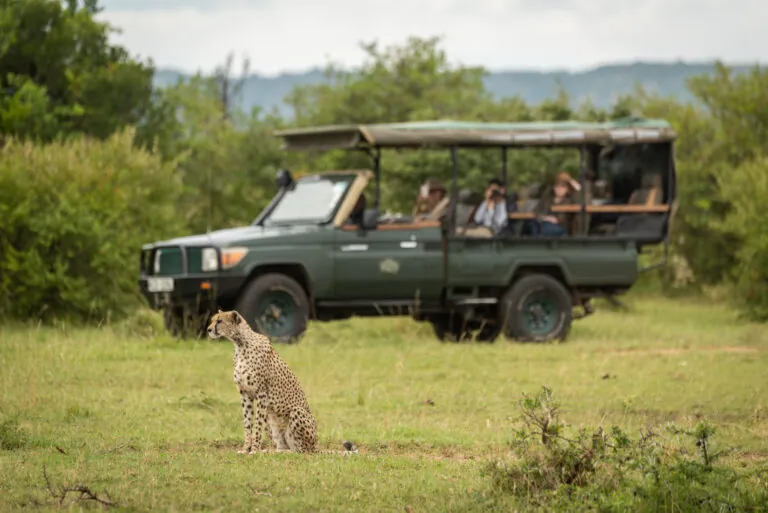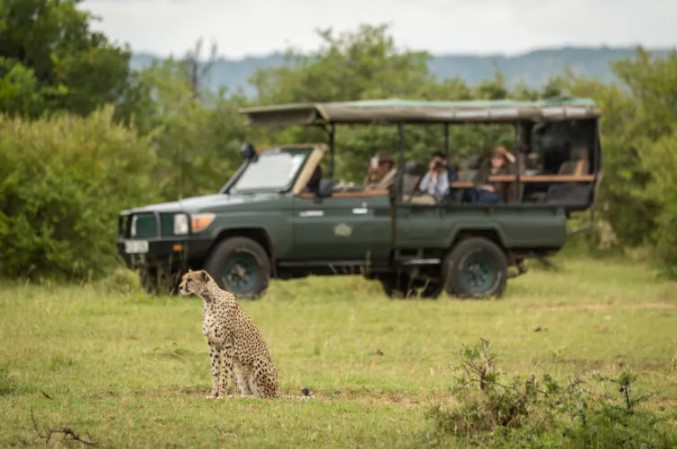Tanzania is a dream destination for safari enthusiasts, offering some of the most iconic and wildlife-rich parks in Africa. From the famous Serengeti to hidden gems like Ruaha, the country's diverse landscapes provide unparalleled opportunities for spotting the "Big Five" and other unique wildlife species. Whether you’re planning your first safari or looking for a new adventure, here’s a guide to seven of the best safari parks in Tanzania, including the best times to visit and where to stay.
- Serengeti National Park
Why Visit:
Serengeti National Park is undoubtedly the crown jewel of Tanzania’s safari parks. Famous for the annual Great Migration, where over a million wildebeest and hundreds of thousands of zebras and gazelles traverse its vast plains, the Serengeti offers unparalleled wildlife viewing opportunities. Visitors can expect to encounter lions, leopards, cheetahs, elephants, and countless other species in their natural habitat.
Best Time to Visit:
The best time to visit Serengeti is during the Great Migration, from late June to October, when the wildebeest crossed the Mara River. The calving season from January to March is also excellent for predator action.
Where to Stay:
Key2Africa Tours & Safaris partners with a range of accommodations, from luxury lodges like Four Seasons Serengeti to budget-friendly tented camps like Kubu Kubu Tented Lodge, ensuring every visitor’s needs are met.

- Ngorongoro Crater
Why Visit:
The Ngorongoro Crater is a UNESCO World Heritage Site and one of the most unique wildlife destinations in the world. As the world’s largest unbroken caldera, this lush area is home to an extraordinary concentration of wildlife, including the critically endangered black rhino, large pride of lions, and herds of elephants.
Best Time to Visit:
The Ngorongoro Crater is accessible year-round, though the dry season (June to September) offers the best wildlife viewing as animals gather around water sources. The wet season (November to May) is great for birdwatching.
Where to Stay:
Key2Africa Tours & Safaris offers stays at premier lodges such as Ngorongoro Crater Lodge for a luxurious experience or Rhino Lodge for a more budget-conscious option.
- Tarangire National Park
Why Visit:
Tarangire National Park is known for its massive elephant herds and iconic baobab trees. It’s less crowded than Serengeti and Ngorongoro, making it ideal for travelers looking for a more intimate safari experience. The park is home to a wide variety of animals, including lions, giraffes, and leopards, as well as over 500 bird species.
Best Time to Visit:
The best time to visit Tarangire is during the dry season (June to October) when wildlife congregates around the Tarangire River, making for fantastic game viewing.
Where to Stay:
Key2Africa Tours & Safaris recommends staying at luxury camps like Tarangire Treetops or more affordable options such as Tarangire Safari Lodge.
- Lake Manyara National Park
Why Visit:
Lake Manyara National Park may be small, but it’s famous for its tree-climbing lions, flocks of flamingos, and diverse landscapes. The park is an excellent destination for birdwatchers and those looking for a quick safari stop en route to the Serengeti or Ngorongoro.
Best Time to Visit:
Visit Lake Manyara from July to October for the best wildlife viewing, while November to June is ideal for bird watching.
Where to Stay:
Key2Africa Tours & Safaris suggests staying at Lake Manyara Serena Safari Lodge or Manyara Green Camp for an authentic bush experience.
- Arusha National Park
Why Visit:
Arusha National Park offers a distinct safari experience, featuring a blend of grasslands, rainforests, and volcanic landscapes. The park is home to Mount Meru, the second-highest peak in Tanzania, and offers unique activities like walking safaris and canoeing.
Best Time to Visit:
Arusha National Park is a year-round destination, but the dry season (June to October) is best for general wildlife viewing.
Where to Stay:
Key2Africa Tours & Safaris recommends Mount Meru Game Lodge for its proximity to both the park and Arusha town.
- Selous Game Reserve (Nyerere National Park)
Why Visit:
Selous Game Reserve, now part of Nyerere National Park, is one of the largest protected areas in Africa. It offers a more off-the-beaten-path safari experience compared to the northern parks, with opportunities for boat safaris along the Rufiji River, walking safaris, and game drives. Selous is known for its diverse wildlife, including elephants, African wild dogs, and large lion populations.
Best Time to Visit:
The best time to visit Selous is during the dry season from June to October when wildlife is easier to spot along the rivers and lakes.
Where to Stay:
Key2Africa Tours & Safaris offers stays at Selous Riverside Safari Camp or Roho ya Selous, providing a range of luxury to mid-range accommodations.
- Ruaha National Park
Why Visit:
Ruaha National Park is one of Tanzania’s best-kept secrets, offering exceptional wildlife viewing with far fewer tourists. The park is famous for its large population of elephants, lions, and endangered wild dogs. Its remote location makes it perfect for travelers seeking a more secluded safari experience.
Best Time to Visit:
The dry season from June to October is the best time to visit Ruaha, as animals gather near the Great Ruaha River.
Where to Stay:
Key2Africa Tours & Safaris suggests staying at Ruaha River Lodge or Mwagusi Safari Camp, where guests can enjoy luxury amidst the wilderness.
Conclusion
Each of Tanzania’s safari parks offers a unique experience, catering to different types of travelers. Whether you’re drawn to the world-renowned Serengeti or the tranquil remoteness of Ruaha, Tanzania is the ultimate destination for any wildlife enthusiast. Key2Africa Tours & Safaris offers expertly crafted itineraries and a range of accommodation options to ensure your safari adventure is as memorable as it is comfortable. Whether you seek luxury or a more budget-friendly option, we’re here to help you explore the best Tanzania has to offer.
Plan your next African adventure with Key2Africa Tours & Safaris today!
For More Info:-





Comments